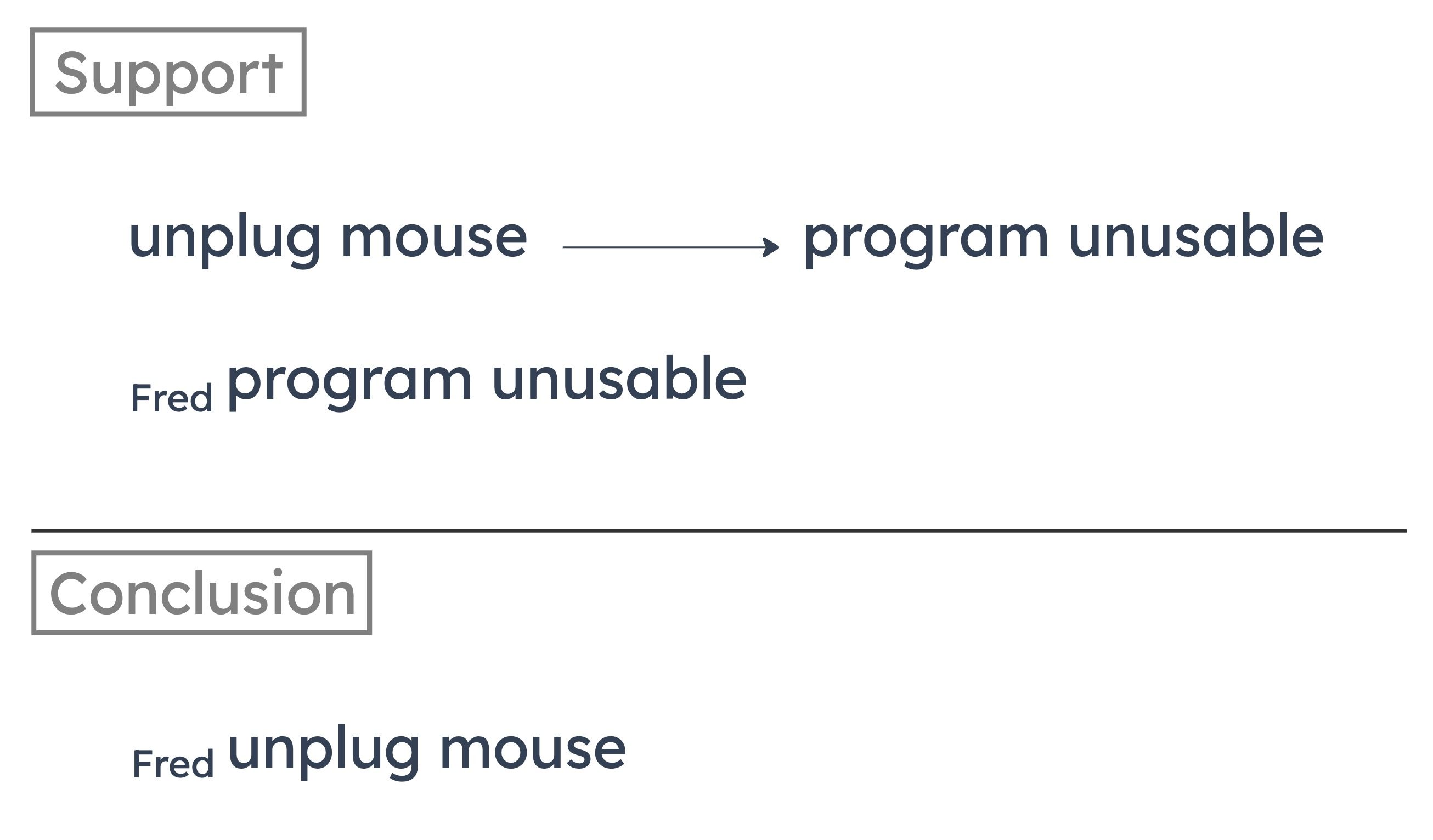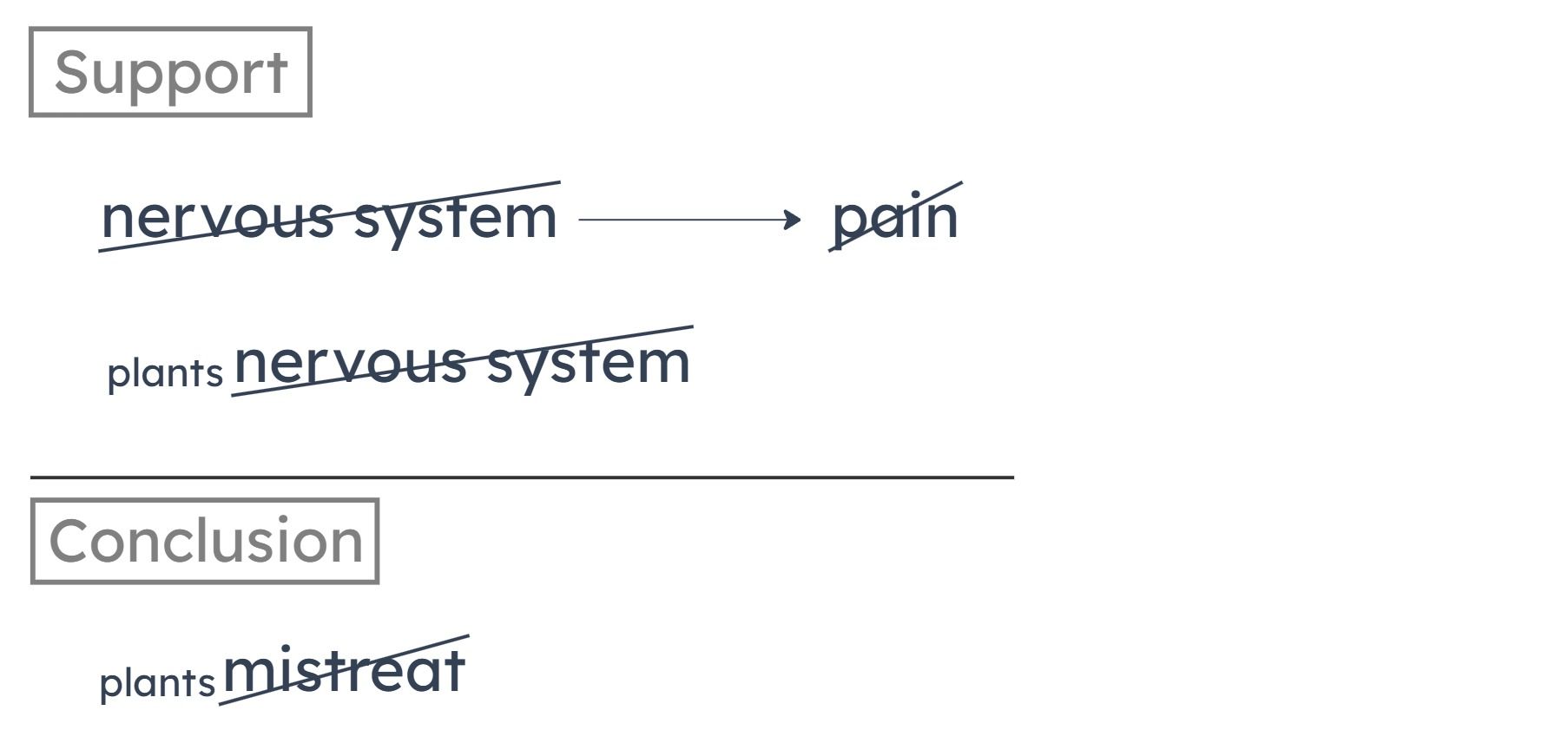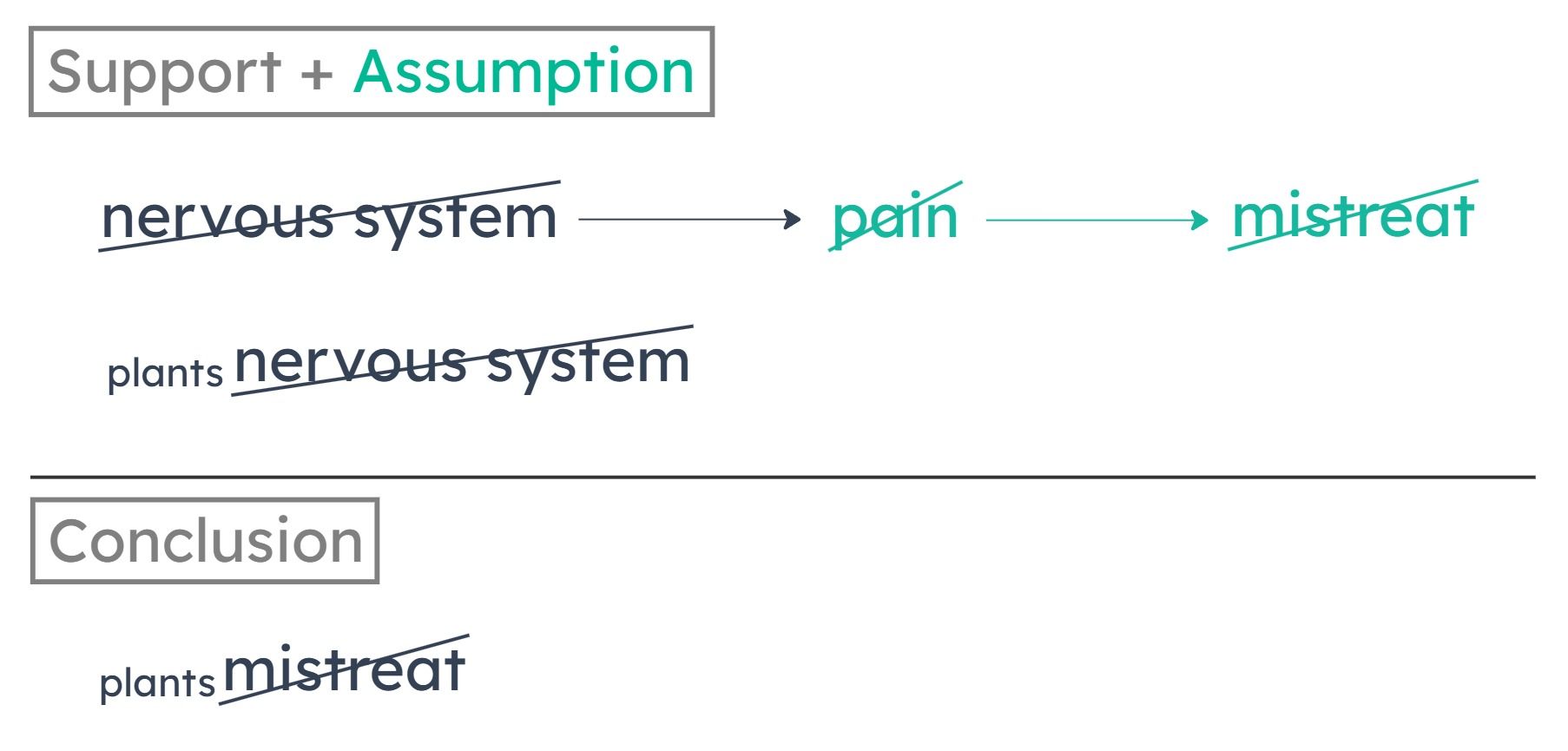Sign up to star your favorites LSAT 27 - Section 4 - Question 10
February 14, 2013Sign up to star your favorites LSAT 104 - Section 4 - Question 10
February 14, 2013
Summarize Argument: Phenomenon-Hypothesis
The author concludes that Fred’s computer mouse must have been unplugged. He supports this by saying that unplugging the mouse from a computer causes all programs that require the mouse to become unusable. He then notes that a software program on Fred’s computer that requires the mouse has become unusable.

Identify and Describe Flaw
This is the flaw of mistaking sufficiency for necessity. The author treats “unplugging the mouse” as necessary for “the program becoming unusable.” But according to his argument, “unplugging the mouse” is sufficient, not necessary.
In other words, the argument overlooks the possibility that Fred’s program could become unusable without his mouse becoming unplugged.
A
It contains a shift in the meaning of “unusable” from “permanently unusable” to “temporarily unusable.”
This is the cookie-cutter flaw of “equivocation.” But the author doesn’t use multiple meanings of the word “unusable” throughout his argument. He simply uses it to mean that a software program has stopped working.
B
It treats an event that can cause a certain result as though that event is necessary to bring about that result.
Unplugging the mouse can cause a program to become unusable, but the author assumes that it’s necessary to bring about that result. In other words, the conclusion mistakenly treats “unplugging the mouse” as a necessary condition, while in the premises, it’s merely sufficient.
C
It introduces information unrelated to its conclusion as evidence in support of that conclusion.
The author never introduces unrelated information as evidence. His evidence is related to his conclusion, but he mistakes the sufficient condition for a necessary condition.
D
It attempts to support its conclusion by citing a generalization that is too broad.
The argument cites a specific scenario about Fred, not a broad generalization.
E
It overlooks the possibility that some programs do not require a peripheral component such as a mouse.
The author is only addressing Fred’s software program that does require a mouse. Presumably other programs don’t require a mouse, but those programs aren’t relevant to the argument.
Sign up to star your favorites LSAT 25 - Section 4 - Question 18
February 14, 2013Sign up to star your favorites LSAT 102 - Section 4 - Question 18
February 14, 2013
Summary
It’s impossible to mistreat plants. Why? To feel pain, you need a nervous system. (Contrapositive: no nervous system, no pain.) And plants don’t have a nervous system.


Missing Connection
The conclusion is about mistreatment, but the premises say nothing about mistreatment.
How to get from the premises to the conclusion? The first premise (plants have no nervous system) triggers the contrapositive of the second premise (to feel pain, you need a nervous system). So we can infer that plants can’t feel pain. That’s as far as the premises get us.
We can make the argument valid if we then assume that when something can’t feel pain, it can’t be mistreated. (Contrapositive: for something to be mistreated, it must be able to feel pain.)
How to get from the premises to the conclusion? The first premise (plants have no nervous system) triggers the contrapositive of the second premise (to feel pain, you need a nervous system). So we can infer that plants can’t feel pain. That’s as far as the premises get us.
We can make the argument valid if we then assume that when something can’t feel pain, it can’t be mistreated. (Contrapositive: for something to be mistreated, it must be able to feel pain.)
A
Any organism that can experience pain can be mistreated.
We can infer from the premises that plants can’t experience pain, so plants fail the sufficient condition here. This assumption doesn’t get us anywhere. However, if the sufficient and necessary conditions here were swapped, this would be the right answer.
B
Only organisms that have nervous systems can experience pain.
This just restates the premise that having a nervous system is necessary to feel pain. It doesn’t explain what, if anything, nervous systems and pain have to do with mistreatment.
C
Any organism that has a nervous system can experience pain.
This says nothing about mistreatment, so it can’t be right. The conclusion is all about mistreatment, yet the premises never even raise the subject of mistreatment. (C) fails to explain what, if anything, nervous systems and pain have to do with mistreatment.
D
Only organisms that can experience pain can be mistreated.
Contrapositive: if an organism can’t experience pain, it can’t be mistreated. And we can infer from the premises that plants can’t experience pain. So (D) guarantees the argument’s conclusion: plants can’t be mistreated.


E
Any organism that has a nervous system can be mistreated.
The premises state that plants don’t have a nervous system, so plants fail the sufficient condition here. This assumption doesn’t get us anywhere.